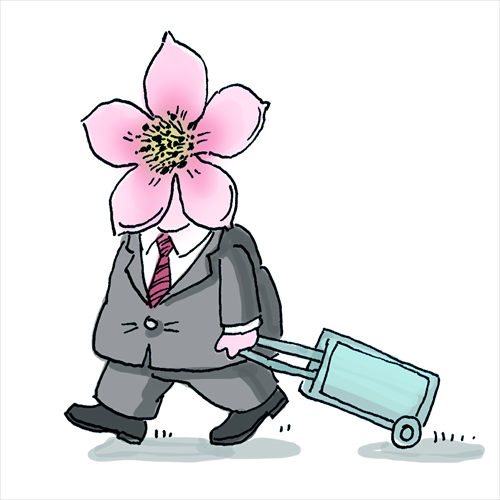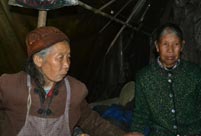


Illustration: Liu Rui/GT
In April 1962, an article was published in a South Korean newspaper that may have been the trigger for a half-century long debate over the origin of the cherry blossom.
According to the article, a group of scientists discovered one of the varieties of the cherry, the king cherry, is native to Jeju Island in South Korea upon having found three wild trees that year. The article cited a French priest who discovered the tree in Jeju Island in 1908 and a German scientist who in 1912 concluded that Jeju's king cherry was Prunus x yedoensis, and said it was the first time that Koreans had discovered the tree was ingenious to Korea.
Prunus x yedoensisin Japan is the yosino cherry, one of the most famous cherry blossom trees. But other accounts have pinpointed different origins for Prunus x yedoensi, such as a hybrid of two native Japanese cherries. There are many varieties of cherry blossom, but many people seem to have missed this point, fixating on this as a question of "national origin."
Over the last 55 years since the article, the dispute has been never-ending. It intensified this year with China jumping into the quarrel.
The head of the China Cherry Industry Association, He Zongru, claimed in late March that the Japanese cherry blossom is originated from the Himalayas, which is a widely-accepted theory, and Japan originally did not have cherry blossoms at all until China passed them to Japan during the Tang dynasty (618-907), according to the Southern Metropolis Daily.
He went on to say that as such symbols represent the soft power of a country, Japan and South Korea emphasize this, according to the newspaper. But soft power is attractive, not exclusive. It presents an appeal to people elsewhere, rather than shutting them out.
There is habitual tendency to turn anything into a rivalry or ownership issue among South Korea, Japan and China. Everything from food to blossom becomes a source for emotional skirmish. One netizen puts it "sooner or later, there will be a claim on the origin of the humanity."
The scientific fact seems to be that the flowering trees are easily hybridized and there are much more varieties and hybrids than can be counted. And many of them came into the world freely, with no regard for changing national borders, throughout a very extended period. So it might be not that easy or significant to pinpoint the origin of particular species.
Admitting that the cherry blossom culture flourished in Japan should not be so difficult. Japan cares so much more about the cherry blossom than South Korea or China, to the point where many people think the cherry blossom represents Japan, whose national flower, incidentally, is not the cherry blossom but the chrysanthemum, the symbol of the imperial family
Japan has cultivated a culture so that families, couples and friends can enjoy a picnic under blooming trees across Seoul, Washington and Beijing. At this point, where the flower has originally come from should not be more than a curiosity when it comes to learning about a flower cherished by many.
In business, if someone takes an idea and develop it into something greater than the original, that is a great way to benefit the world. Many people think Apple was the creator of the smart phone, but IBM introduced the first-ever smart phone back in 1992.
Facing yet another cultural skirmish, my friends were skeptical. "Flowers have no nationality," one said. "Can we just appreciate it as the flower of Asia?" another said.
 J-11 fighters in air exercise
J-11 fighters in air exercise Beauties dancing on the rings
Beauties dancing on the rings Attendants-to-be join Mr. & Miss Campus Contest
Attendants-to-be join Mr. & Miss Campus Contest Beijing's toughest anti-smoking law takes effect
Beijing's toughest anti-smoking law takes effect Family lives in cave for about 50 years in SW China
Family lives in cave for about 50 years in SW China PLA soldiers operating vehicle-mounted guns in drill
PLA soldiers operating vehicle-mounted guns in drill Blind carpenter in E China's Jiangxi
Blind carpenter in E China's Jiangxi China hosts overseas disaster relief exercise for the first time
China hosts overseas disaster relief exercise for the first time 20 pairs of twins who will become flight attendants in Sichuan
20 pairs of twins who will become flight attendants in Sichuan Obama is sowing discontent in S.China Sea
Obama is sowing discontent in S.China Sea Rescuers work through night to reach cruise ship survivors
Rescuers work through night to reach cruise ship survivors Driving through limbo
Driving through limbo Facing down MERS
Facing down MERSDay|Week